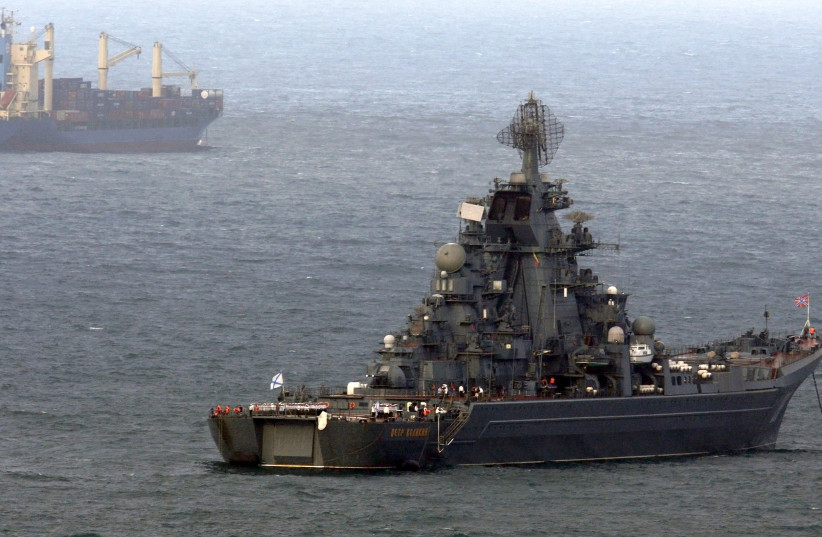The Russian Nuclear-powered missile cruiser, named Pyotr Velikiymay (or 'Peter the Great in English), may be decommissioned and removed from the Russian Naval fleet despite previous plans to repair it, Russian media outlet TASS reported on Thursday.
According to the media report, which has not been confirmed, an unnamed naval source claimed that the cruiser was too costly to repair and maintain compared to the Russian battle cruiser Admiral Nakhimov.
"Currently, the issue of withdrawing Pyotr Velikiy from the Navy is being worked out," the source said. "It seems that the experience of repairing and modernizing the Admiral Nakhimov of the same type has shown that this is very costly."
This will be the second nuclear-powered vessel that Russia has decommissioned in the last few months. In February, Russia decommissioned the Dmitry Donskoy submarine.
About the nuclear-powered missile cruiser
The Pyotr Velikiy warship was launched in the Navy in 1996 and was originally named the Yuri Andropov after the Communist Party's general secretary. Its name was changed to Pyotr Velikiy after the fall of the Soviet Union.
The ship was most recently used during a naval exercise in the Arctic last August, where it fired a cruise missile into the sea.

The cruiser is the only known nuclear-powered surface combat ship in the Russian Navy. It boasts a displacement of 24,300 tons (standard) and 28,000 tons (full load) at 252 meters in length and 28.5 meters in beam.
The ship is armed with its own nuclear power plant and guided missile weapons, which are designed to destroy large surface targets, provide integrated air defense and perform anti-submarine duties. The ship is armed with 20 P-700 Granit, 64 3K95 Kinzhal surface-to-air missiles, 48 S-300FM Fort-M Surface-to-air missiles and 6 Kashtan point defense guns.
The ship is expected to be replaced by the Admiral Nakhimov, which is currently undergoing maintenance and repairs.
What action has the ship participated in?
"As part of a planned exercise with a grouping of heterogeneous strike forces of the Northern Fleet taking place in the waters of the Barents Sea, the flagship of the Northern Fleet—the Pyotr Velikiy heavy nuclear missile cruiser (TARKR)—launched a Granit cruise missile at a target position in the Novaya Zemlya archipelago," said the Russian Ministry of Defense cited by Newsweek.
"Earlier, the Pyotr Velikiy TARKR, in cooperation with the Admiral Ushakov destroyer, conducted practical anti-aircraft missile and artillery firing at air targets. The area of the Barents Sea, where rocket firing was carried out, was closed in advance for civil navigation and aviation flights."
